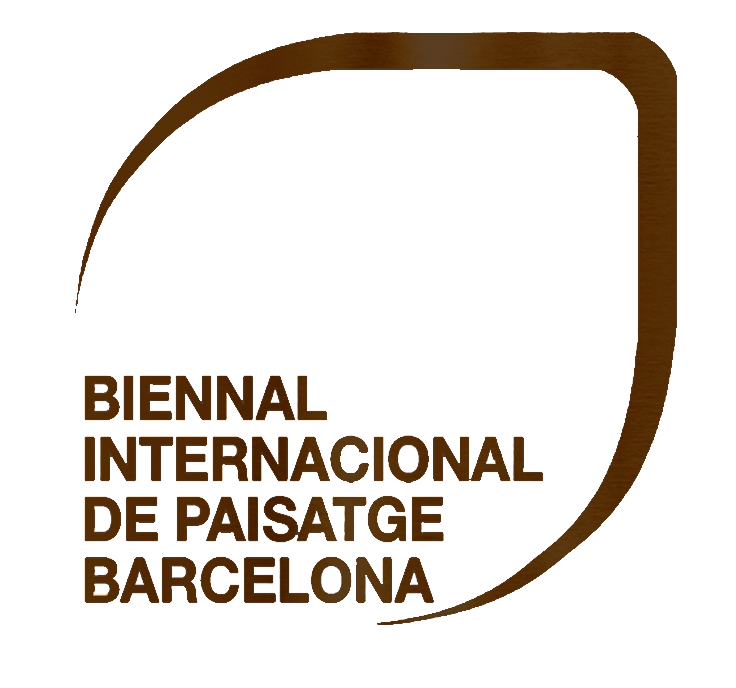
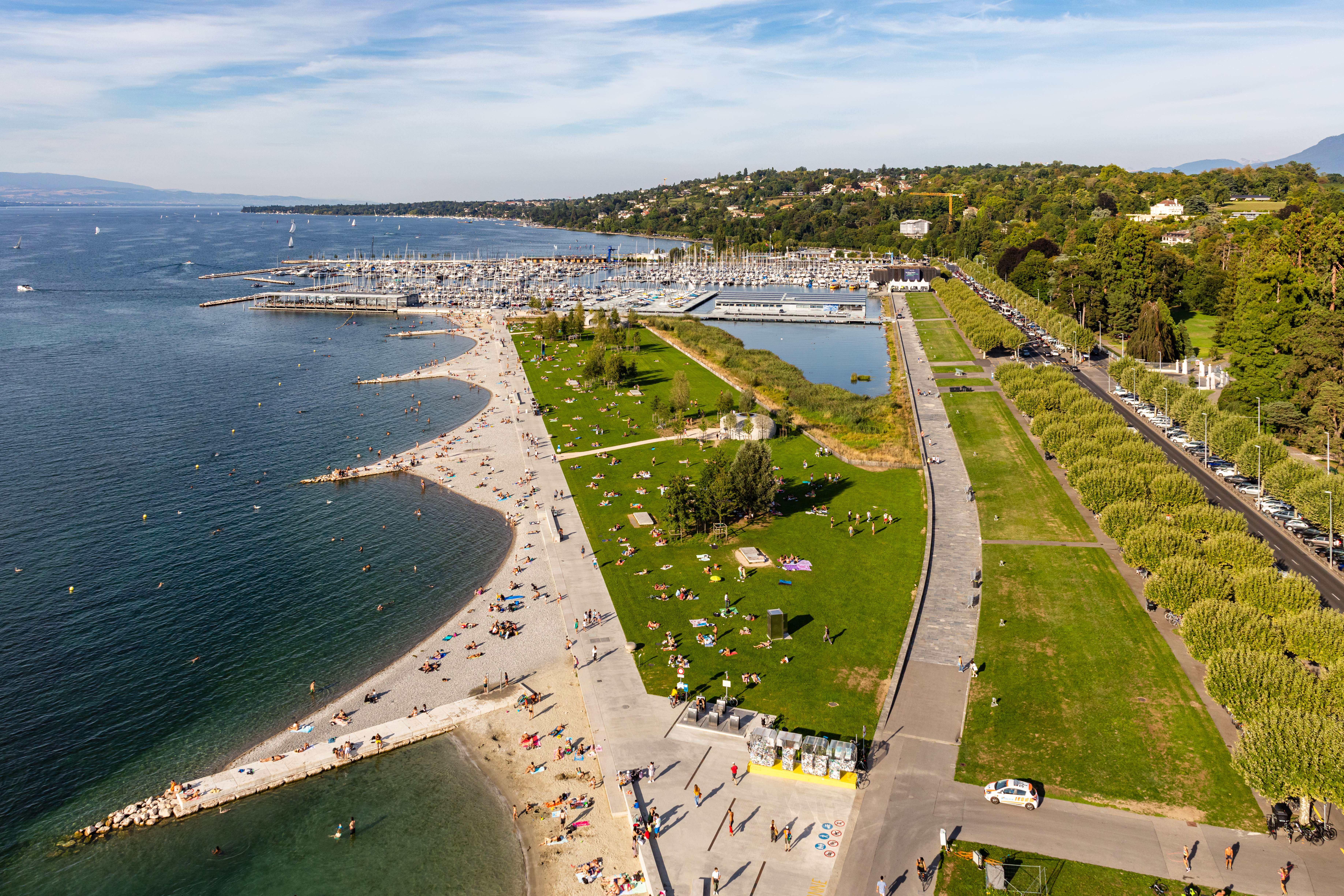
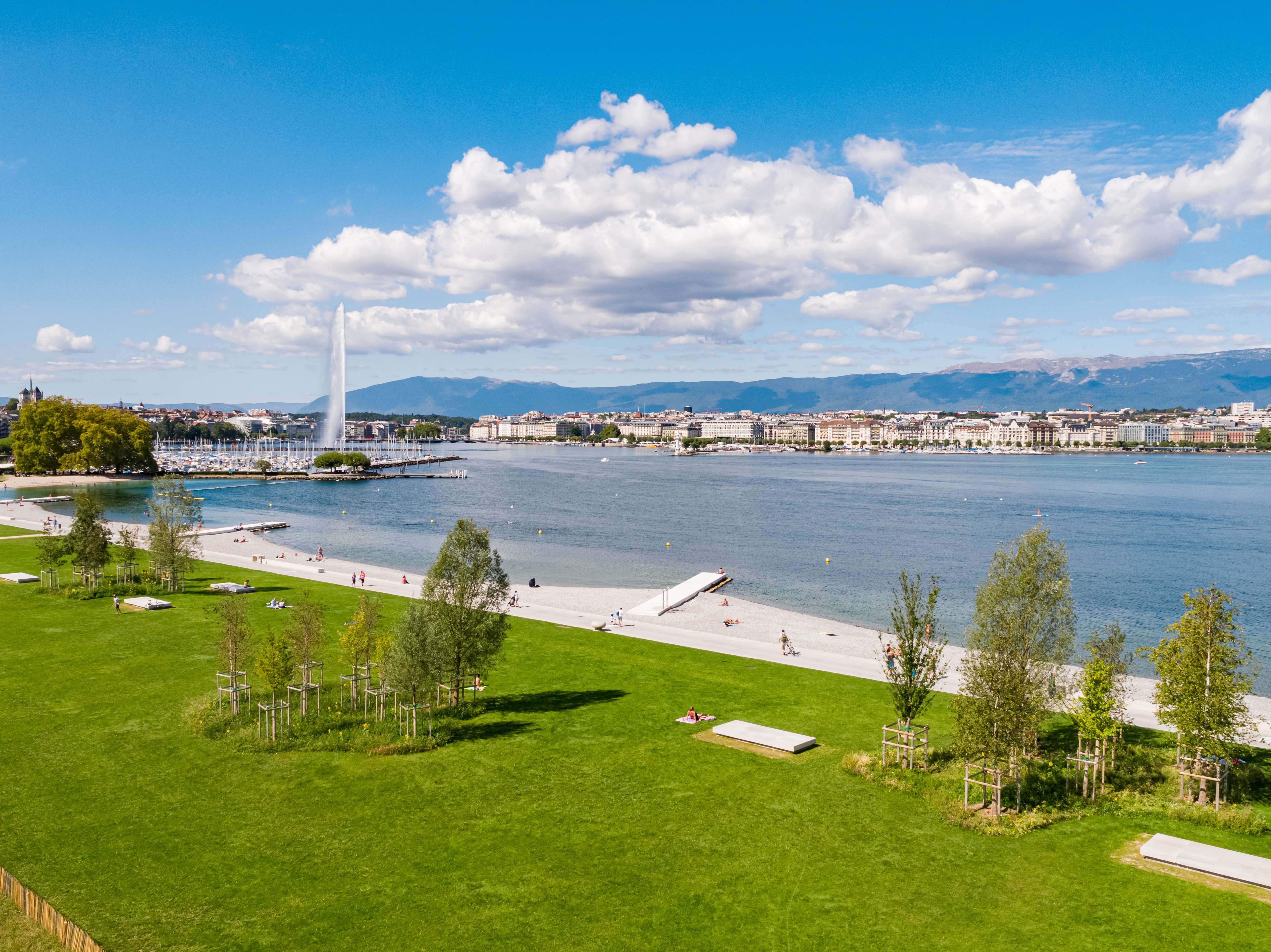
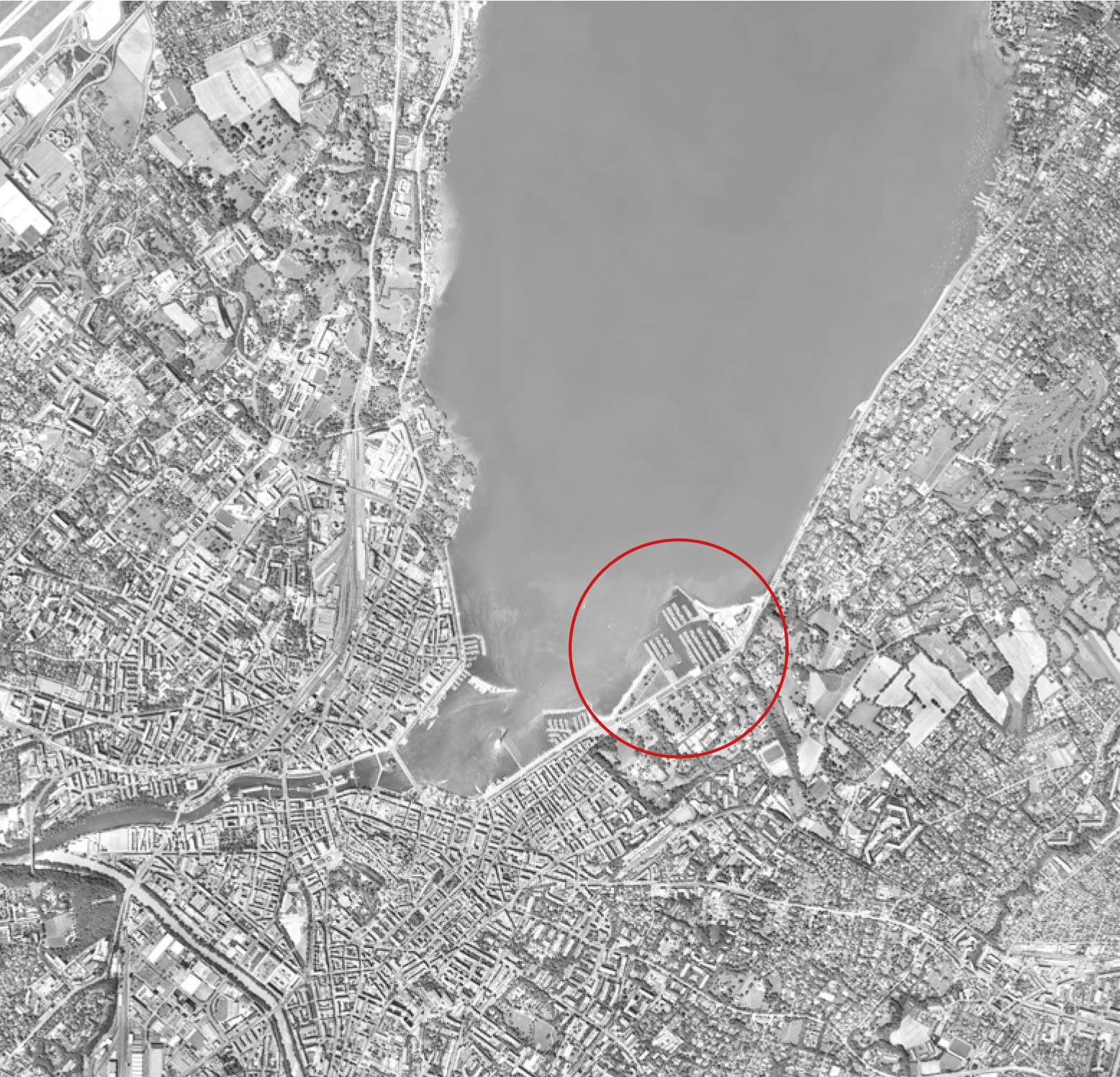
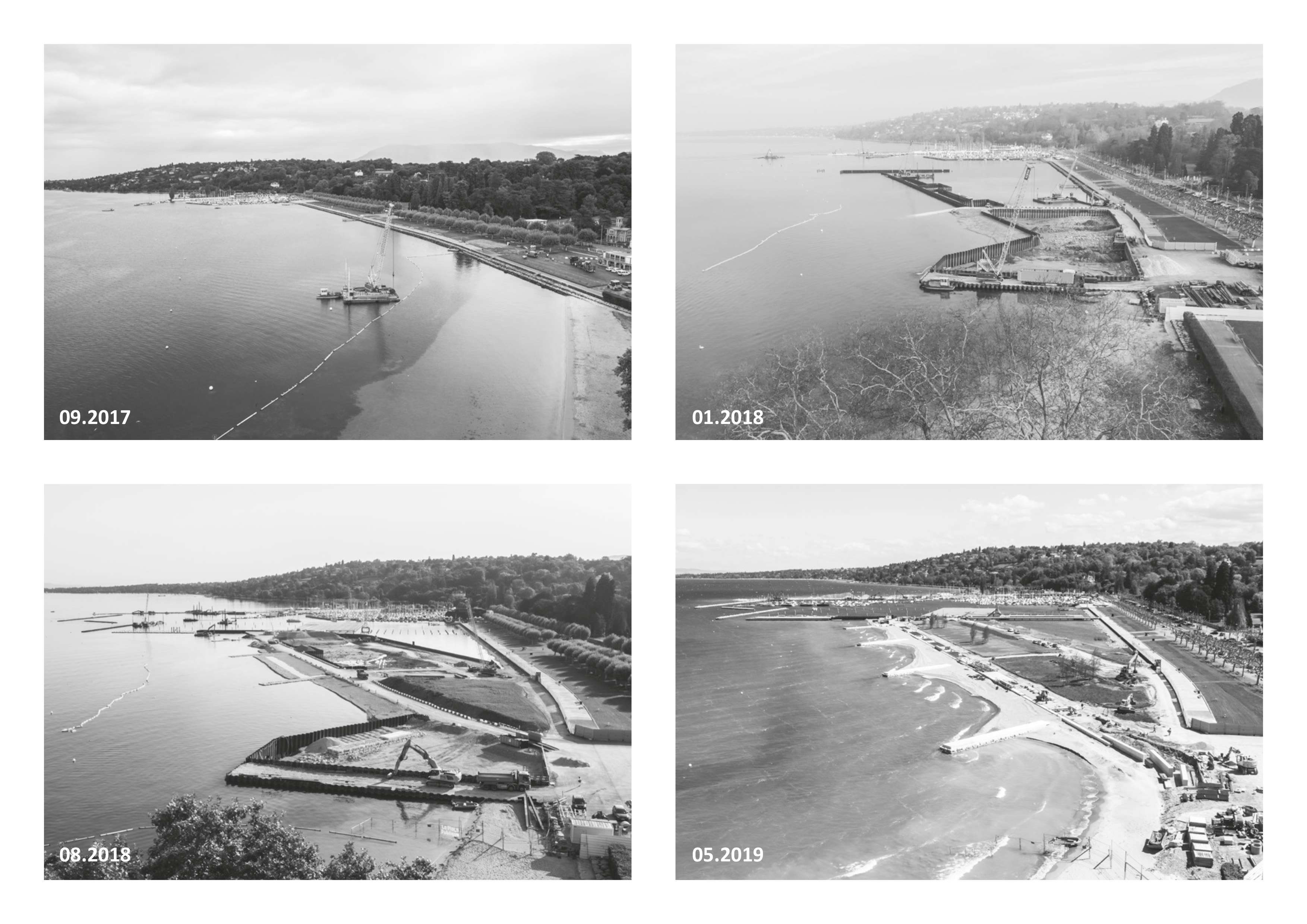
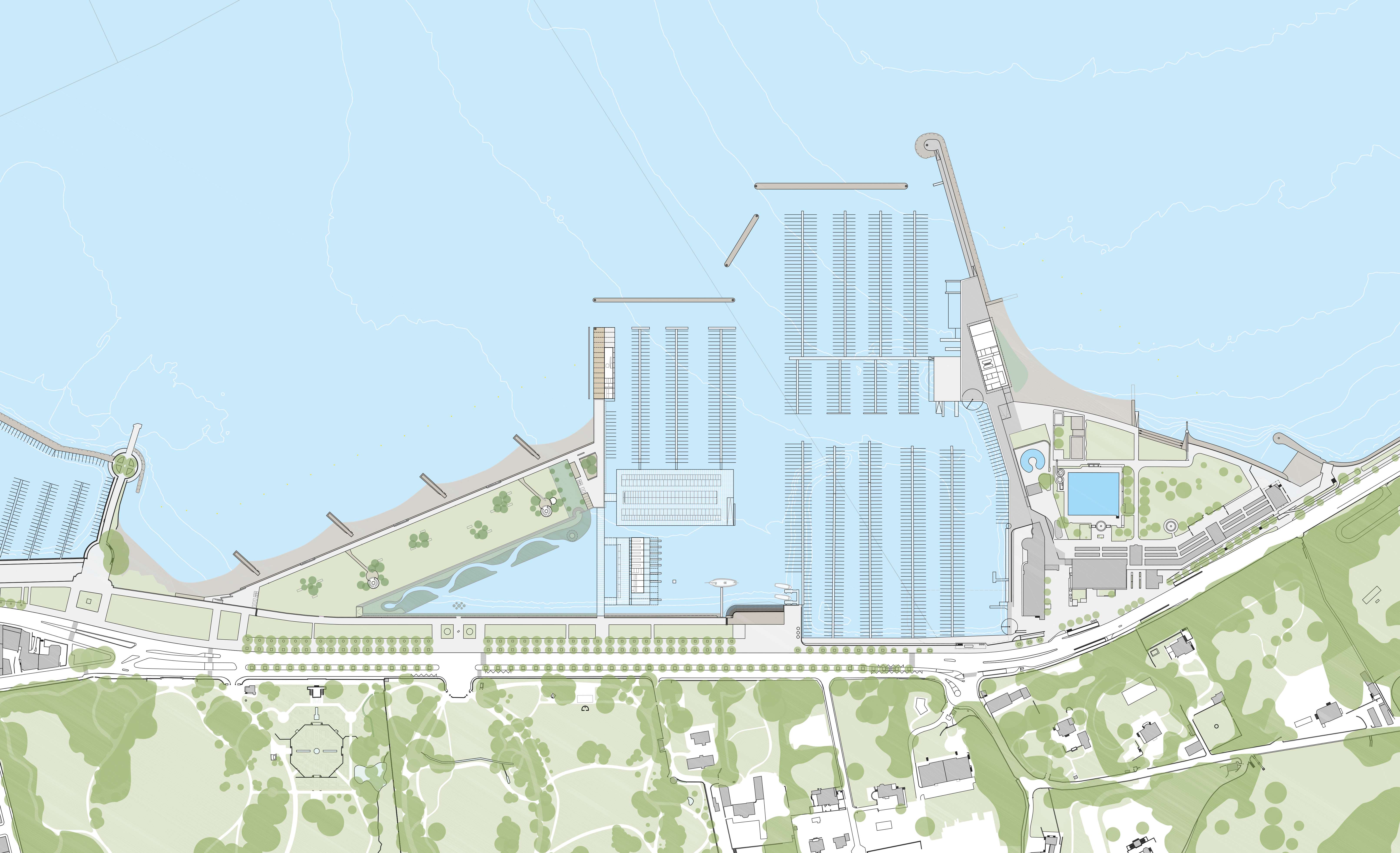
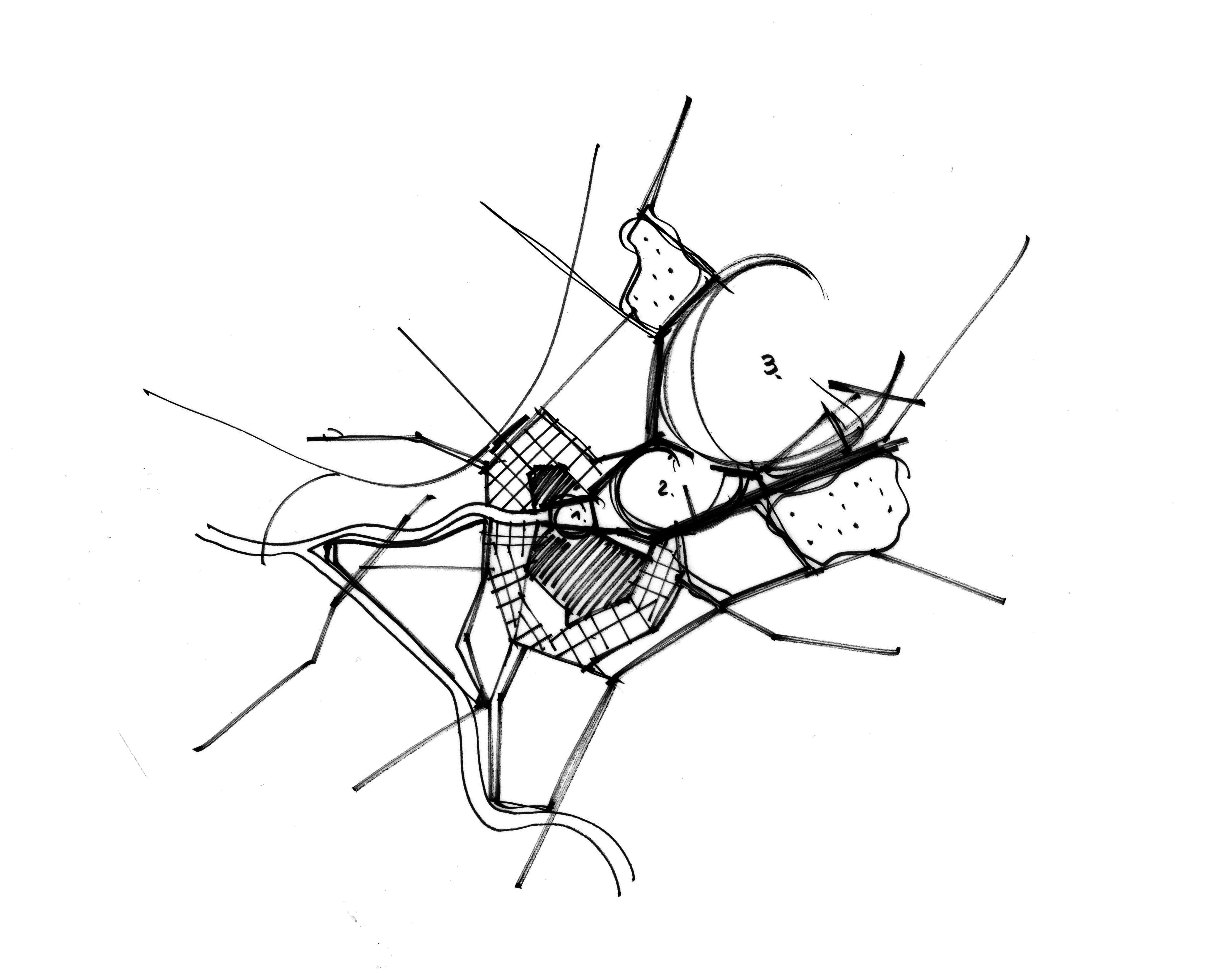
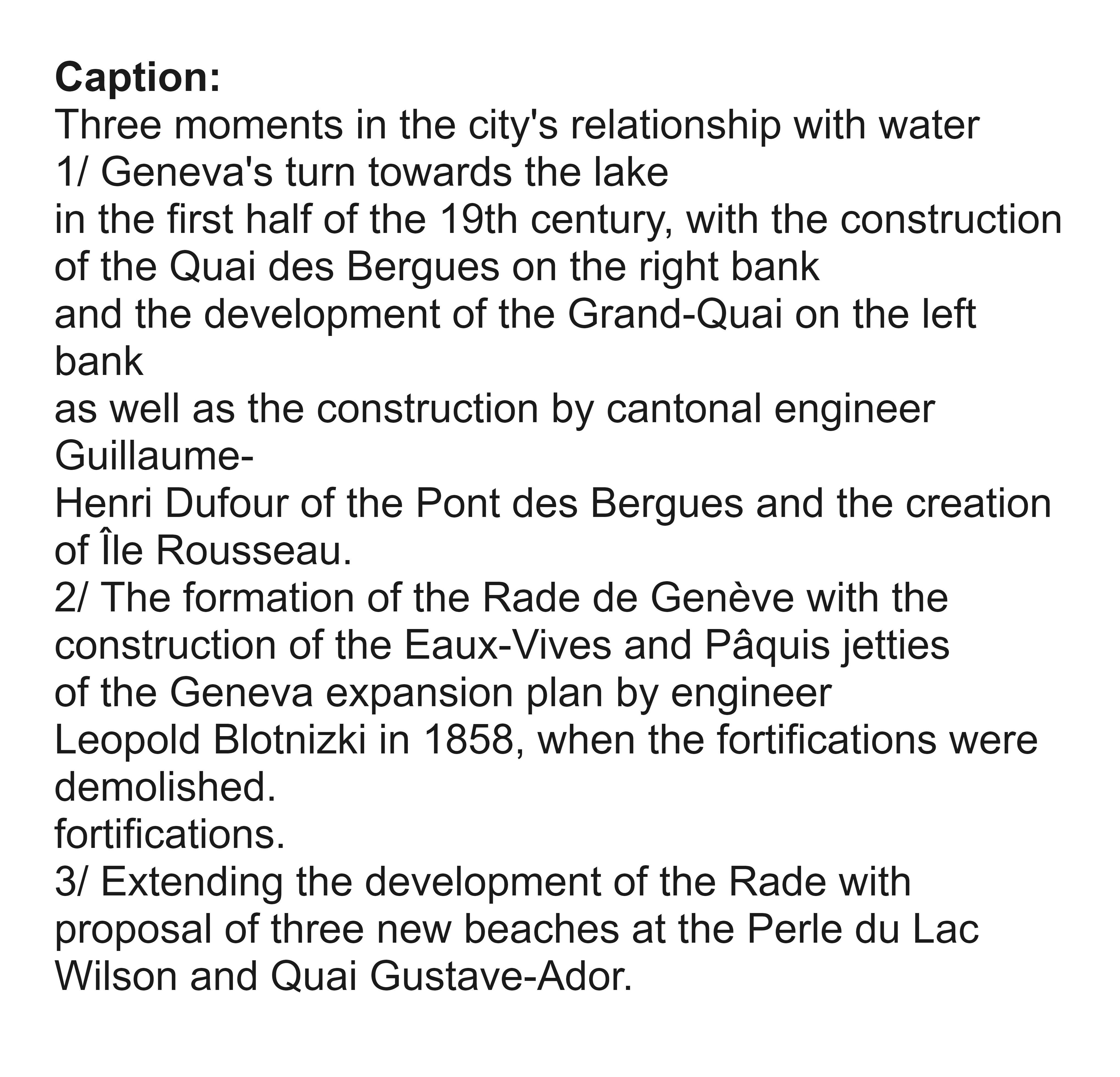
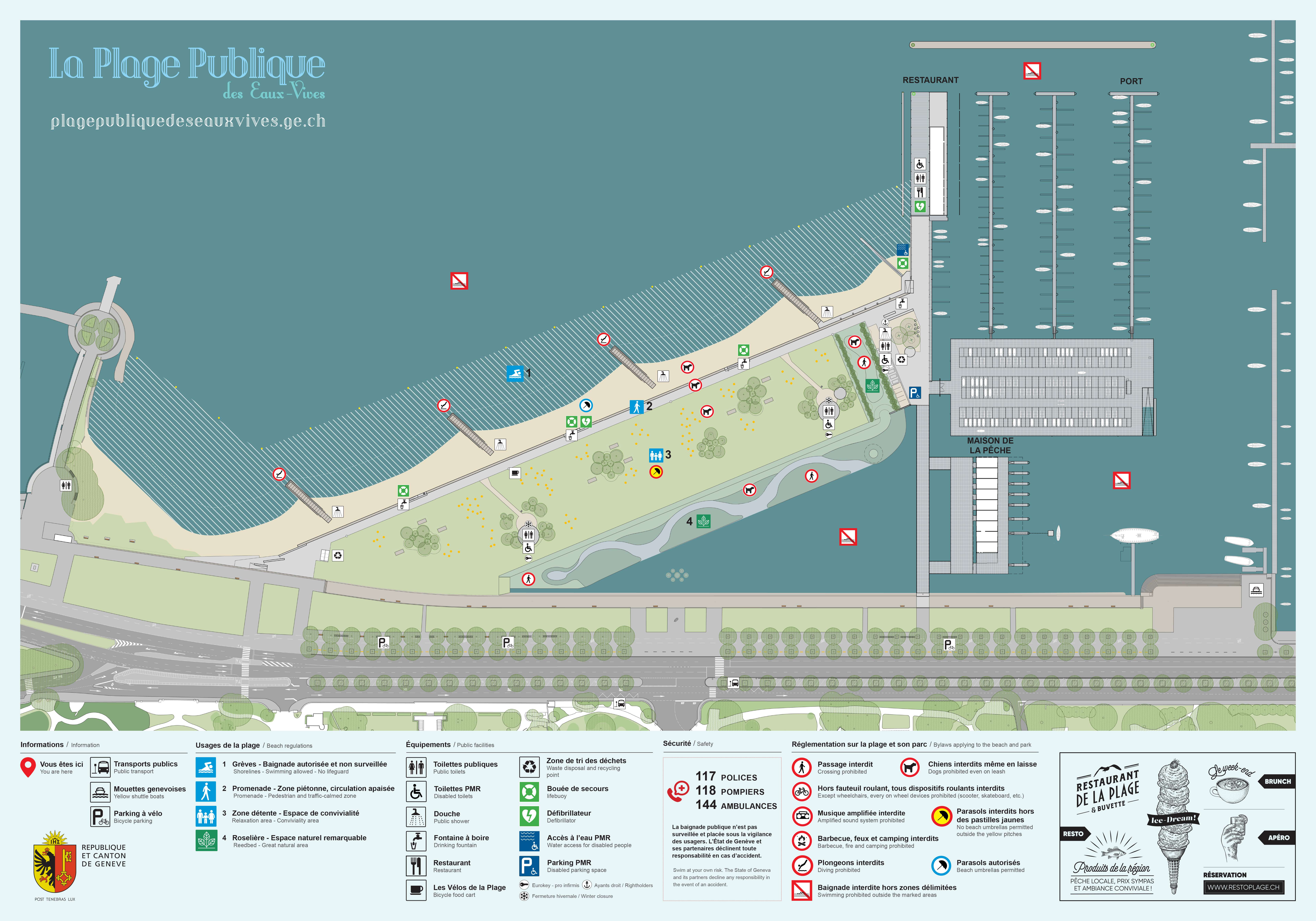
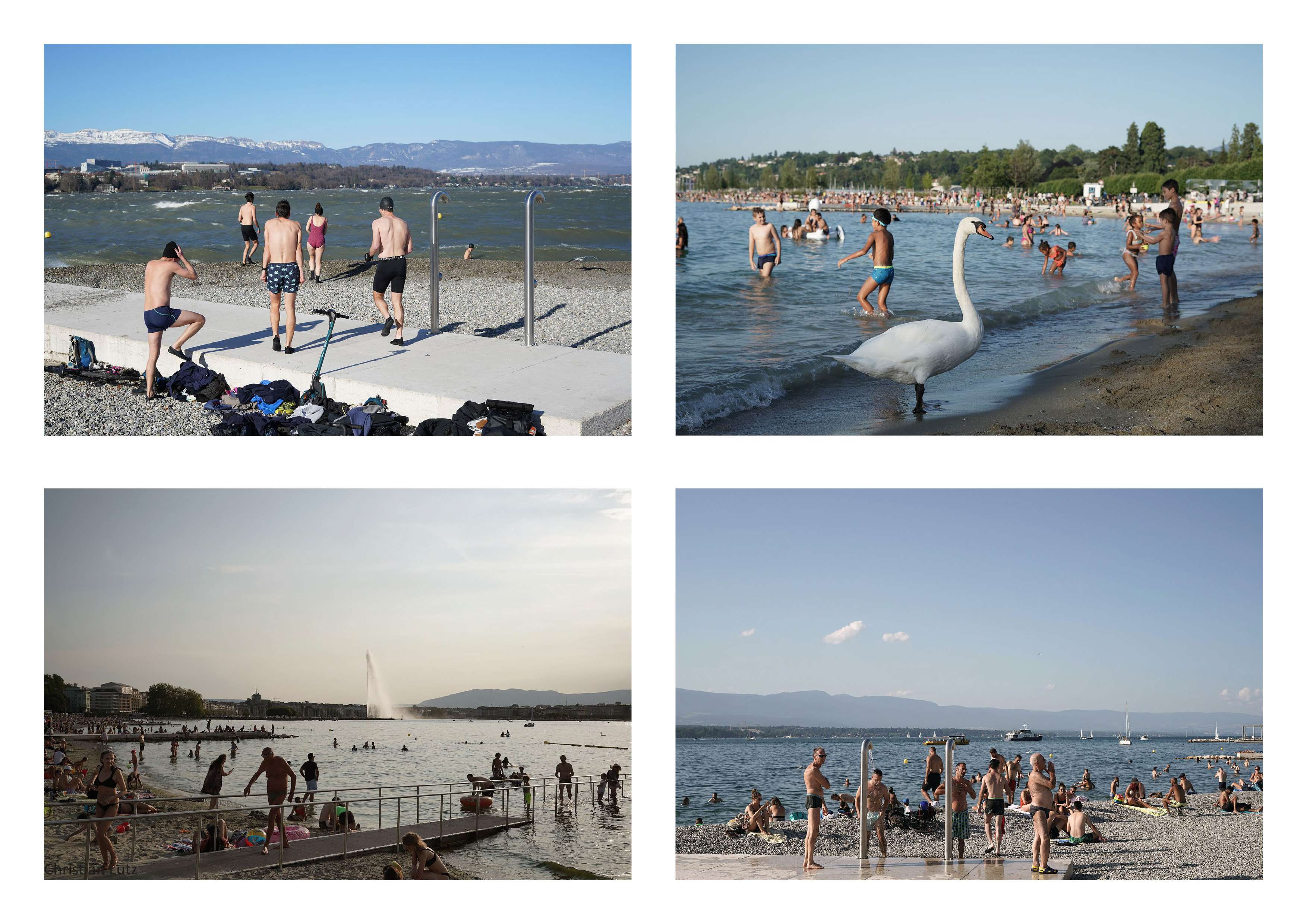
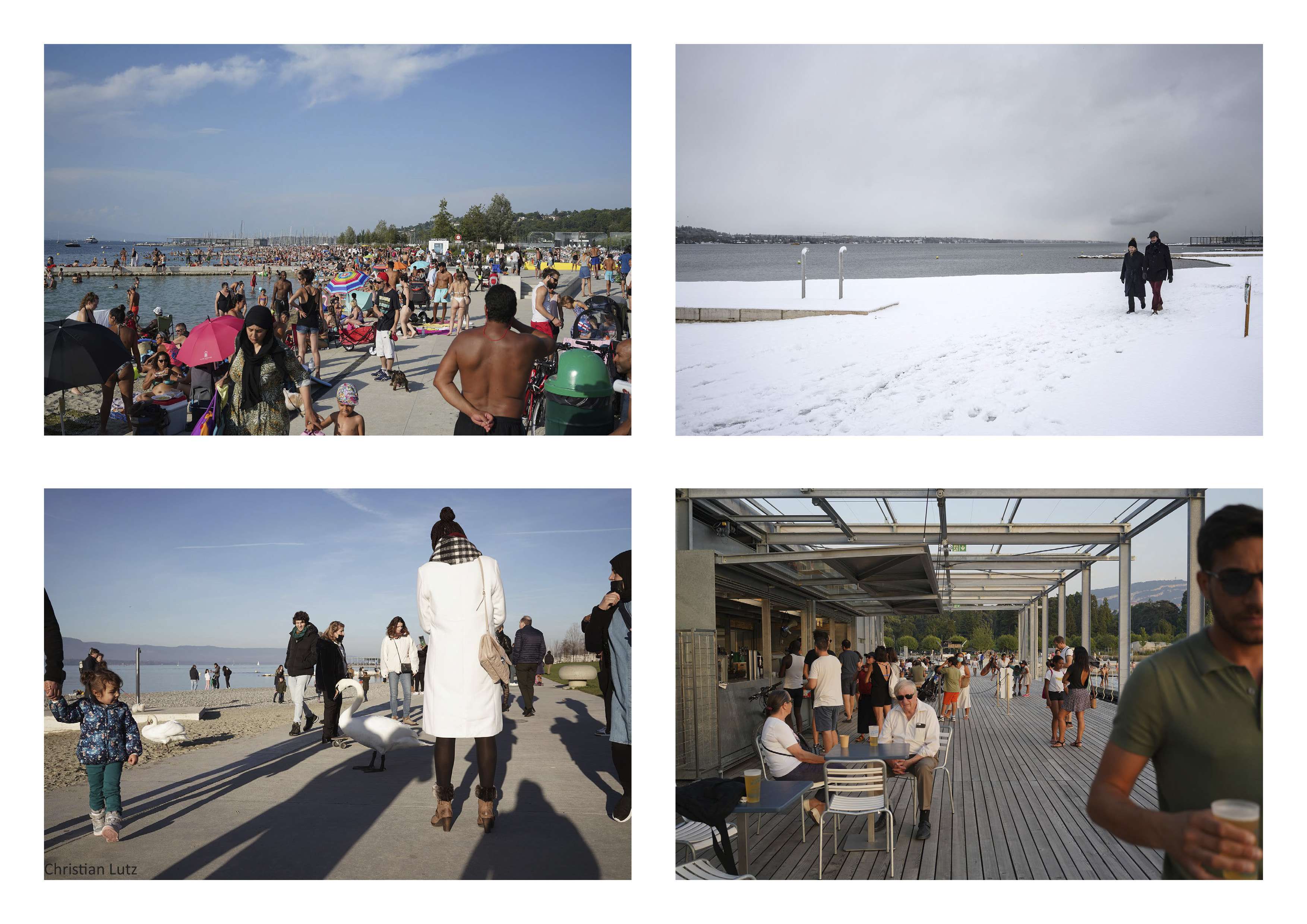
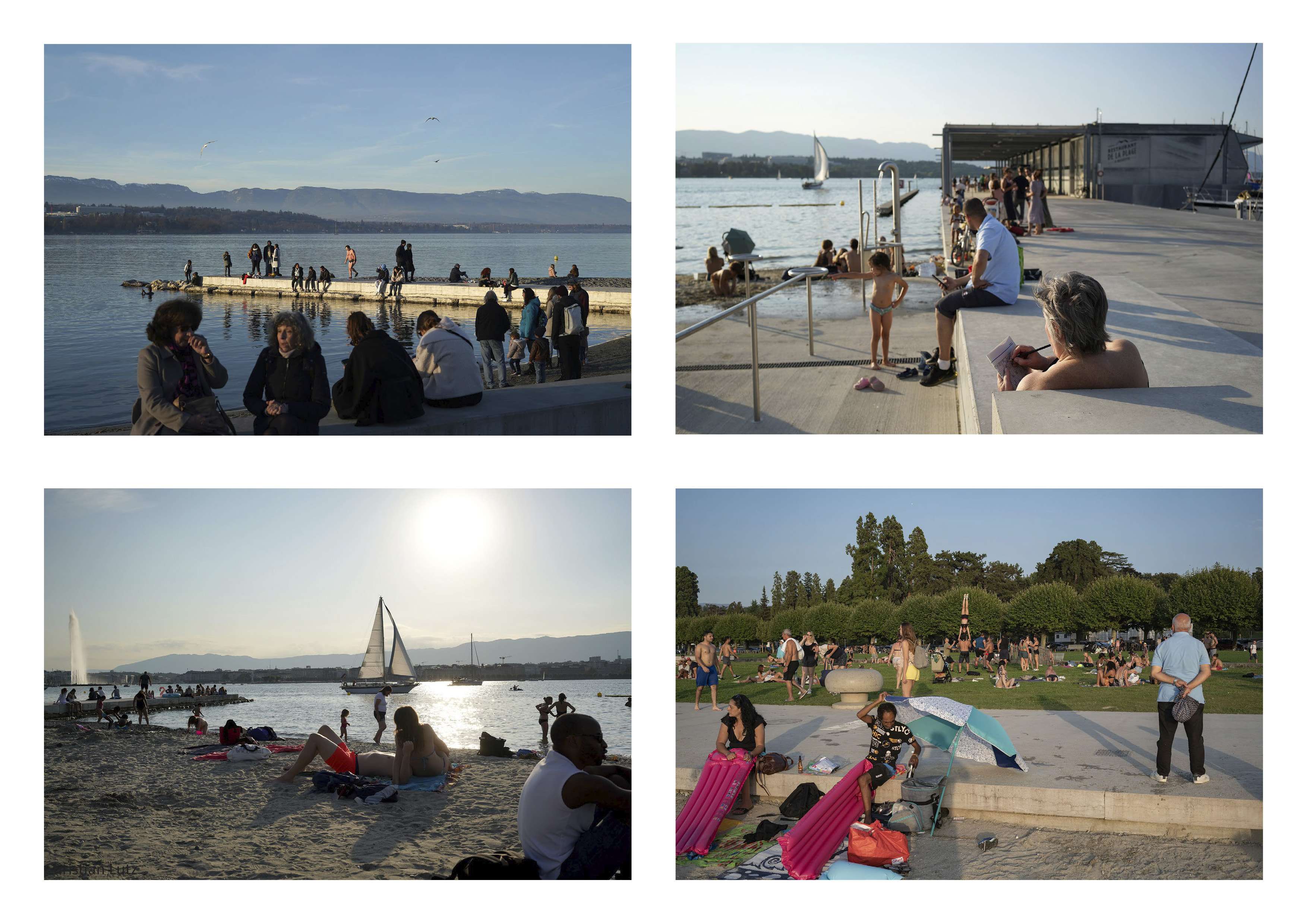
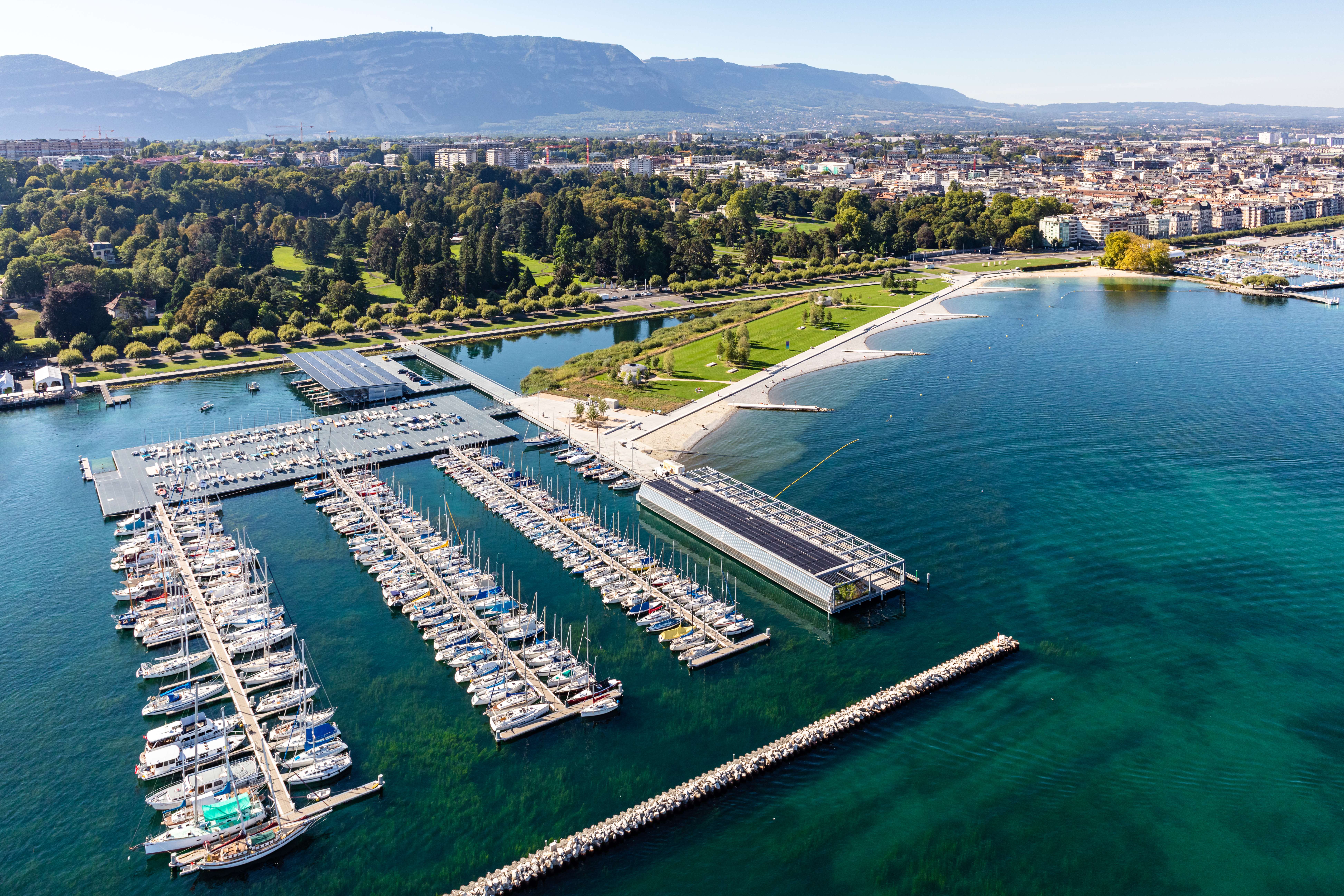
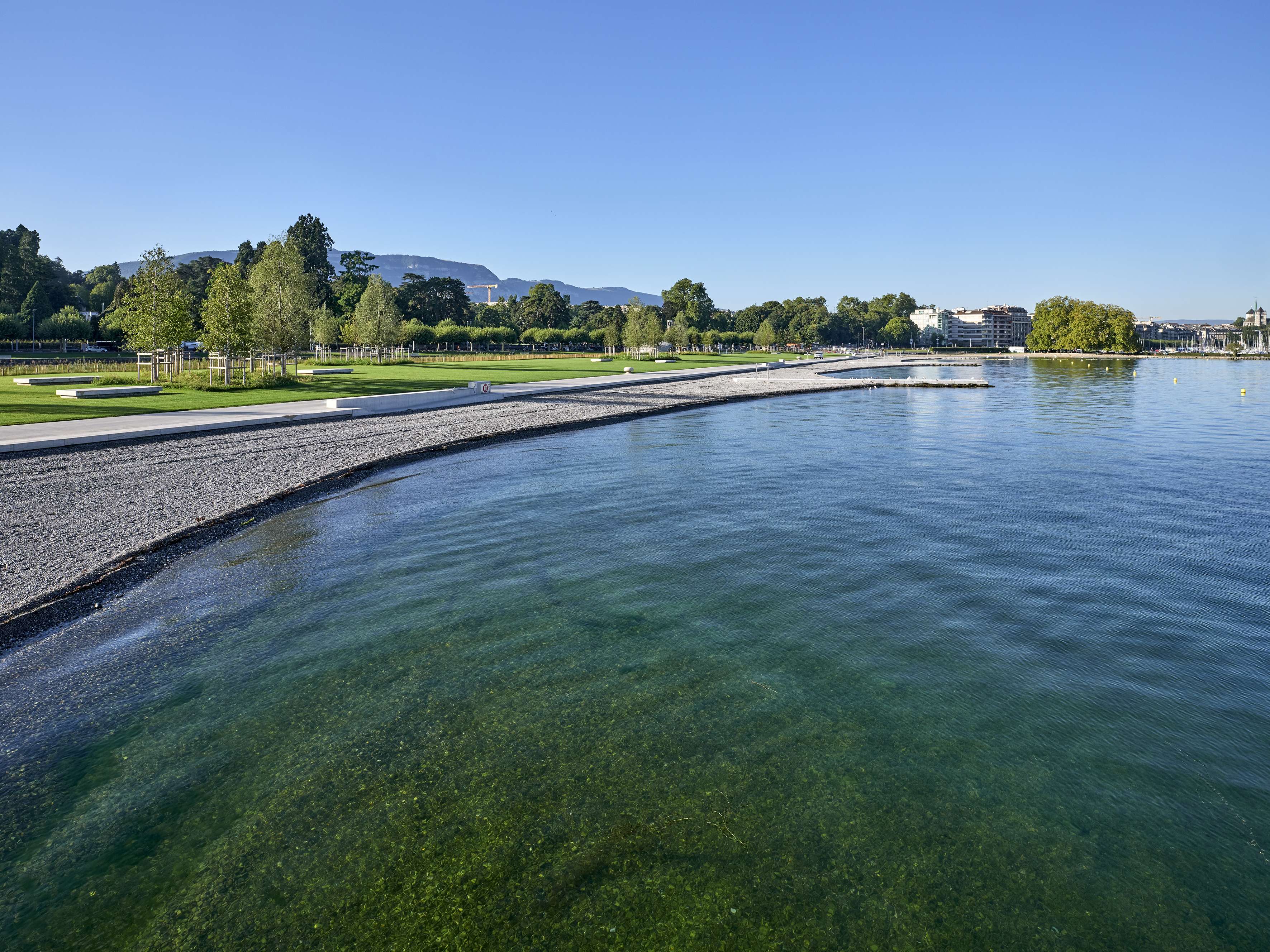
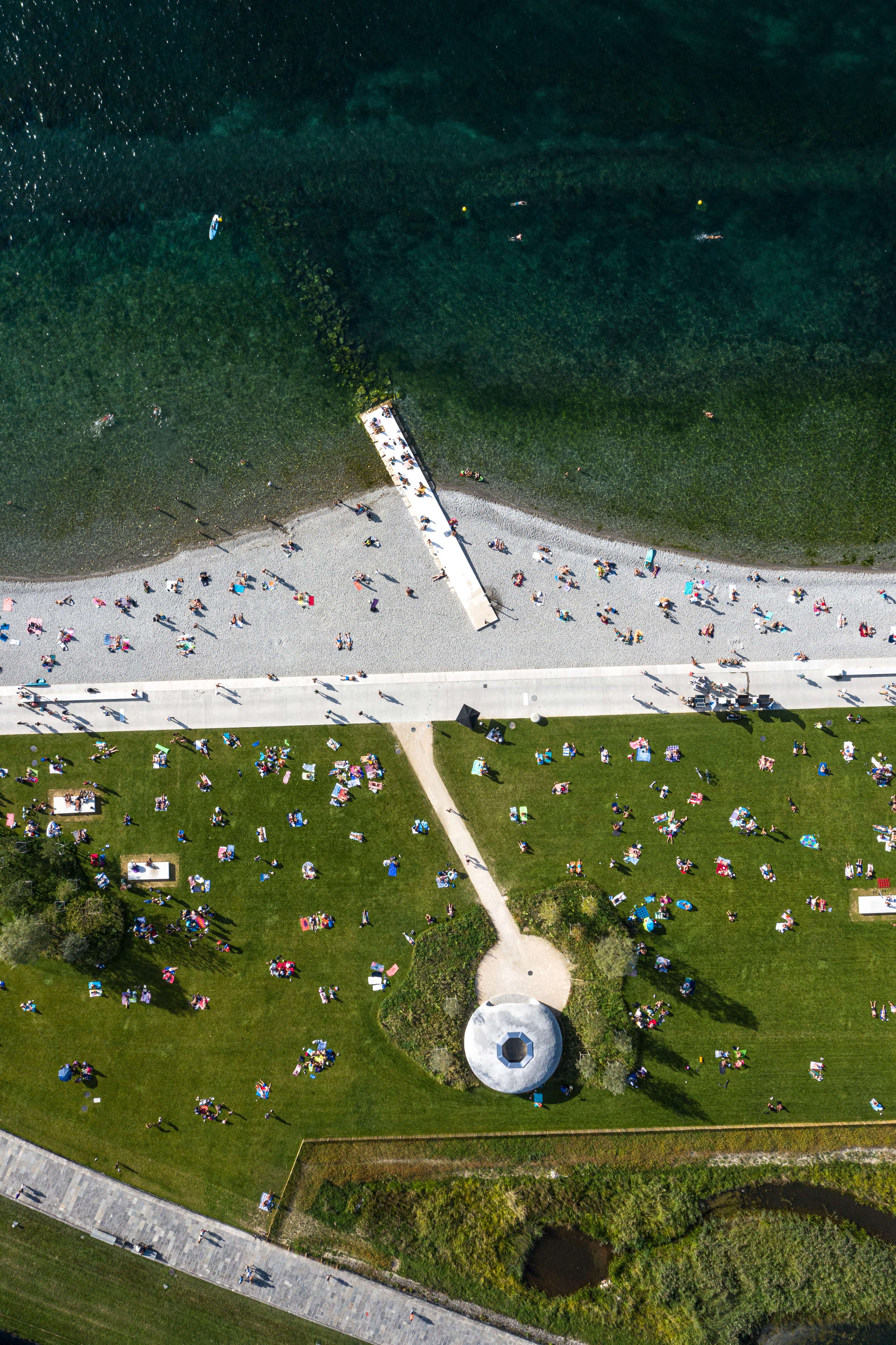
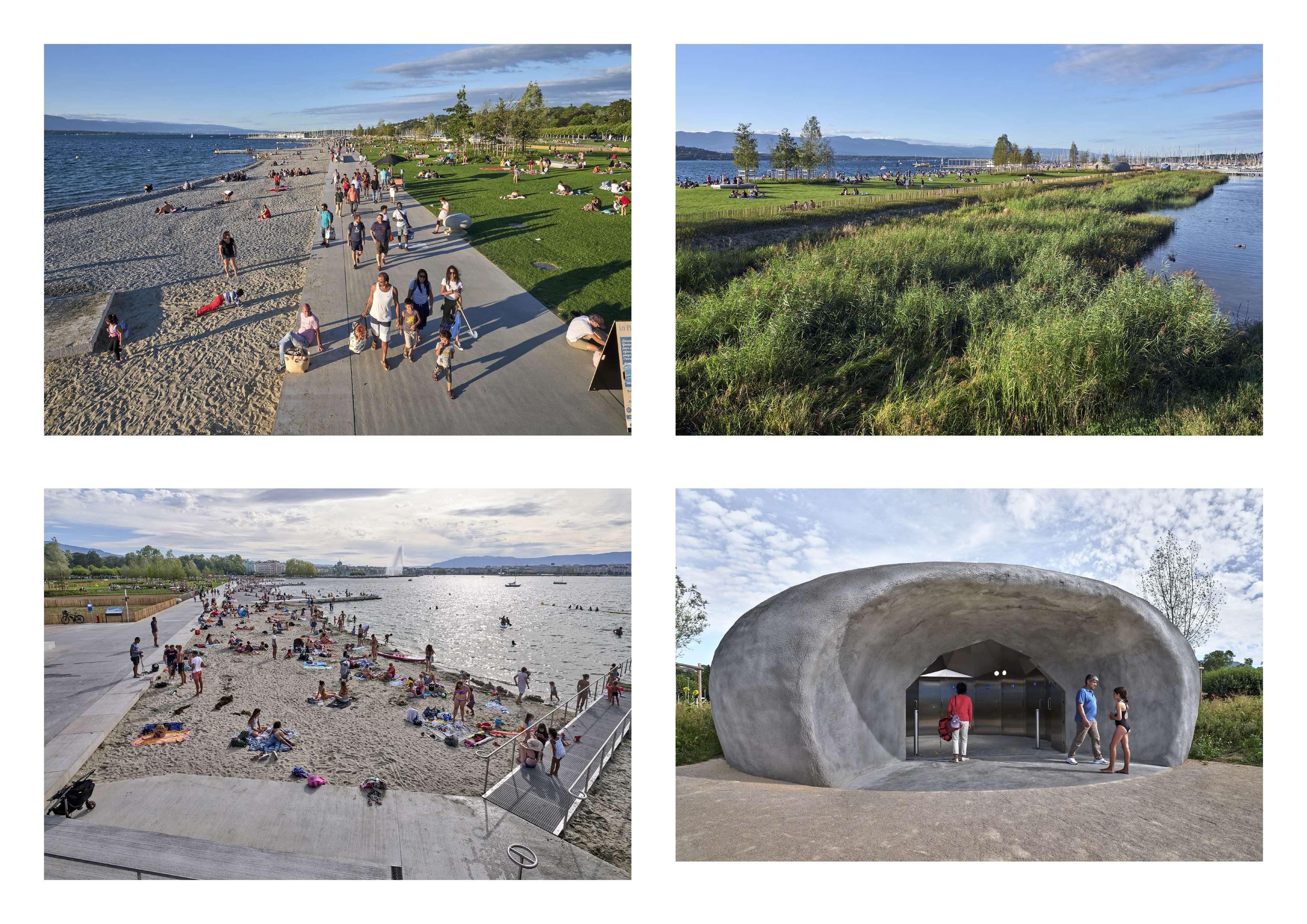
Desarrollo de una nueva playa pública y un puerto en la Rade de Genève
Desenvolupament d'una nova platja pública i d'un port a la Rade de Genève
Development of a new public beach and a port in the Rade de Genève
Plage des Eaux-Vives
Geneva, Switzerland
Development of a new public beach and a port in the Rade de Genève
Because of its strong presence in the center of the city and the excellent quality of its waters, Lake Geneva is undeniably an essential element of Geneva's social life. However, since its shores are mainly made up of walls and riprap blocks for the protection of the banks, they offer few bathing places. And it is thousands of bathers, lovers of sun and relaxation who concentrate on the all-too-few public spaces on the shore of the lake.
Although the history of the Rade de Genève until the middle of the 20th century is well documented, its recent development has not been thoroughly studied, despite the fact that it has undergone major transformations. The port facilities have changed with the end of the ballet of working boats and the rise of the passion for leisure boating.
The practice of bathing has also evolved. The construction of the 1930s baths under the impulse of the hygienist spirit (Bains des Pâquis, Geneva Beach), was followed between 1960 and 1970 by the development of numerous swimming pools linked to urban expansion and the construction of satellite suburbs. There was also, as early as the mid-1960s, an awareness of a rapid deterioration in water quality. “No Swimming” signs appeared around the shores of Lake Geneva. As a result, the important task of preserving water quality by the treatment of waste water in sewage treatment plants commenced.
The struggle for the preservation of the Bains des Pâquis and their renovation, completed in the summer of 1995, gave rise to renewed interest in bathing in the lake and relaxing on its shores. It was also in the early 1990s that the Fil du Rhône project was adopted, which provided for the re-appropriation of wharves along the river.
This rediscovered attraction to bodies of water in the heart of the city is at the origin of a new overview of the harbor, with the proposal to develop new large beaches. This project meets the needs for public spaces in a city growing ever more densely populated and the evolution of social practices linked to the use of shores in a relationship of enjoyment to be found in all seasons.
Because of its strong presence in the center of the city and the excellent quality of its waters, Lake Geneva is undeniably an essential element of Geneva's social life. However, since its shores are mainly made up of walls and riprap blocks for the protection of the banks, they offer few bathing places. And it is thousands of bathers, lovers of sun and relaxation who concentrate on the all-too-few public spaces on the shore of the lake.
To meet these challenges, the project of a new public beach, on the left bank, is being developed, aligned with the La Grange and Eaux-Vives parks. It offers a large public space in direct contact with the lake shore. The project also includes the construction of a new public port where moorings downstream from the jetty of the water jet, and dinghies stored ashore on the wharf have been relocated, and professional fishermen provided with a building that meets current operating standards.
The Eaux-Vives beach and port project therefore also declutters the Rade de Genève to the right of the big fountain and the existing docks, from the Jardin Anglais to the Eaux-Vives landing stage. It thus responds to the strong need for public spaces in an increasingly built-up city, as well as to the evolution of social practices linked to the use of the lake shores.
Client: State of Geneva
Project: 2009-2016
Realization: 2017-2020
Atelier Descombes Rampini, Genève
In collaboration with:
edms, civil engineers, Lancy
Architect: LLJ, Geneva
Other commissioned firms:
Geotechnician: Karakas & French, Lancy
Geometer: Adrien Küpfer, Geneva
Environmental engineer: Viridis, Lancy
Materials management engineer: Ecoservices, Carouge
Heating and ventilation engineer: JDR Energie, Confignon
Sanitary engineer: Frédy Margairaz, Geneva
Electrical engineer: Zanetti, Lancy
Mobility engineer: Citec, Geneva.
